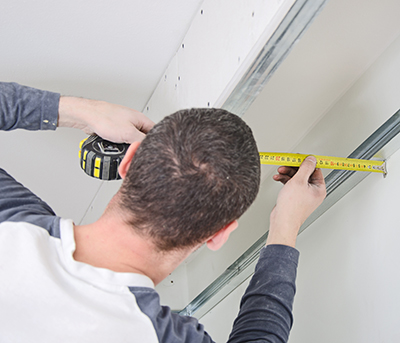Drywall Restore
We actually perceive the truth that drywall restore and set up is often commenced by those that are keen on taking the task of their hand as far as repairing the wall is anxious. Merely adhere the patch to the wall and canopy with drywall compound. It is not mandatory to strengthen the horizontal edges of the replacement drywall. Cut alongside the strains on the wall with a drywall knife. Earlier than the drywall compound dries, add texture to it with a short-handled stomping brush. Let dry, then add a third coat to easy any remaining uneven areas. A scrap of drywall, a leftover piece of window screening, some joint compound, and a few frequent instruments are all it takes, if you use the outlet-patching technique demonstrated on the next Step-By-Step by This Outdated House basic contractor Tom Silva.
Apply a coat of compound and tape to each joint (Photograph 3). Skinny the compound a bit with water to assist embed the tape. A typical drywall downside, especially in newer homes, is nail pops,” or nail heads that draw back from the wood studs and protrude by the drywall tape or paint. You might have to use two or three coats to fully fill holes, but the skinny layers dry quickly and are straightforward to use.
For small holes, like these created by a doorknob, a patch kit may be used. Fit the gypsum into the new gap and press the paper edges coated with joint compound into place alongside the skin edge of the opening. Drywall knife to use drywall compound over the mesh. A popped nail is not holding within the stud and backs out of the drywall, making a popped nail head.
If the crack extends through the seam’s paper tape, or if the tape has pulled loose from the wall, use a razor knife to chop the tape about 6 to 12 inches from each ends of the injury (image 1 and 2). Remove the tape but watch out to not tear away the drywall’s paper covering. Place a taping knife or skinny plywood behind the tool to prevent additional injury to the wall — be especially careful not to lever in opposition to unsupported drywall or the instrument will punch a hole that can require a extra intensive restore.
Then there are two methods to repair nail pops: use a screwdriver or hammer to drive the nail back into the studs (image 1), then bracket each nail head with intently spaced drywall screws (picture 2); or, take away the nail and drive a screw in its place, along with a second screw close by, to re-secure the drywall to the stud. Photo 1: Drive a popped nail below the surface of the drywall with a hammer and a nail set.